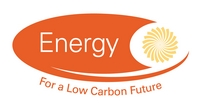Projects
Projects: Projects for Investigator |
||
| Reference Number | ST/L006278/1 | |
| Title | Ammonia Reactor for Cracking (ARC) | |
| Status | Completed | |
| Energy Categories | Energy Efficiency(Other) 100%; | |
| Research Types | Basic and strategic applied research 100% | |
| Science and Technology Fields | PHYSICAL SCIENCES AND MATHEMATICS (Chemistry) 100% | |
| UKERC Cross Cutting Characterisation | Not Cross-cutting 100% | |
| Principal Investigator |
Dr H M A (Hazel ) Hunter No email address given Science and Technology Facilities Council |
|
| Award Type | 1 | |
| Funding Source | STFC | |
| Start Date | 01 January 2013 | |
| End Date | 31 December 2015 | |
| Duration | 24 months | |
| Total Grant Value | £337,020 | |
| Industrial Sectors | Manufacturing Research | |
| Region | South East | |
| Programme | CLASP 2013 | |
| Investigators | Principal Investigator | Dr H M A (Hazel ) Hunter , Science and Technology Facilities Council (99.999%) |
| Other Investigator | Dr TJ Wood , ISIS Pulsed Neutron & Muon Source, STFC (Science & Technology Facilities Council) (0.001%) |
|
| Web Site | |
|
| Objectives | Objectives not supplied | |
| Abstract | By 2050 the UK is legally obliged under the Climate Change Act to reduce its greenhouse gas emissions by at least 80%, from 1990 baseline levels. Among a number of potential options one promising route is the implementation of the hydrogen economy in which hydrogen (H2) is produced by the electrolysis of water using low carbon energy sources and then, using a fuel cell or through combustion, converted to water and energy. H2 is therefore one of the primary energy vectors that offers a serious alternative to fossil fuels. Target markets include transportation, renewable energy generation/back-up and remote power supply sectors. Two major challenges prevent the widespread implementation of the hydrogen economy: the lack of a cheap and effective method of H2 storage and the absence of sufficient infrastructure for its production and transportation. A viable solution to both these challenges lies in the use of ammonia as a clean and secure H2-containing energy vector. Ammonia is 17.8 wt% H2 and is currently manufactured, via the Haber-Bosch process, in quantities of ca. 200 million tonnes p.a. world-wide. The utilisation of ammonia as a H2 source is enhanced by its existing well-developed distribution infrastructure, its ease of handling (it is liquid at room temperatures under modest pressure) and its high H2 volumetric density (120 kg H2/m3, compared with pure liquid H2 at 71 kg H2/m3). This project will create a first demonstrator system for a new hydrogen production method, aimed at eventual use in fuel cell-electric vehicles, using low pressure ammonia as the hydrogen storage medium. |
|
| Data | No related datasets |
|
| Projects | No related projects |
|
| Publications | No related publications |
|
| Added to Database | 14/07/22 | |



